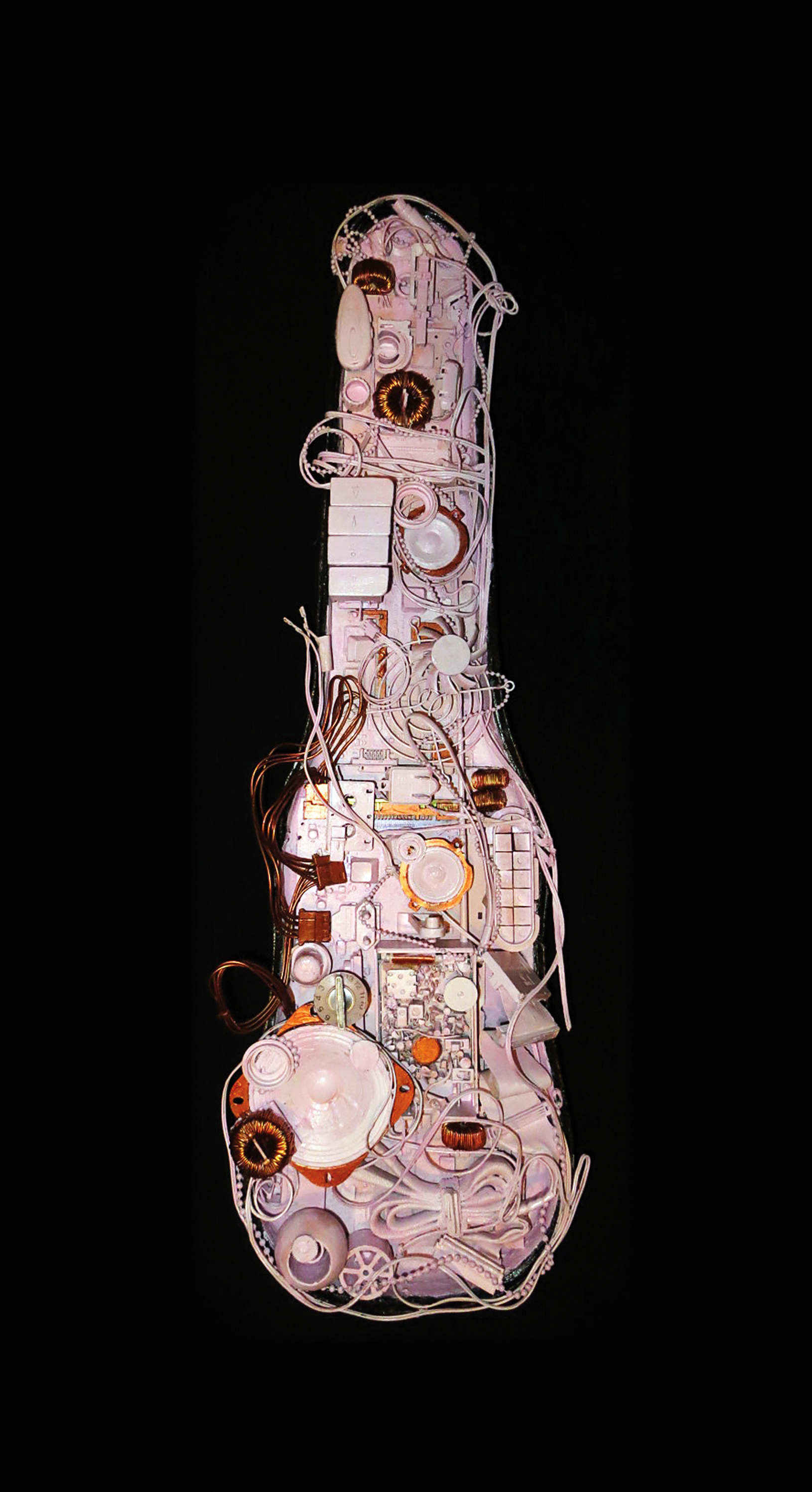Nothing captures the boom of a kick drum’s resonant head or the growl of a bass cab quite like a Neumann U 47fet [Tape Op #108]. A well-placed dynamic mic will capture the attack and the mids, but the low and high frequencies usually suffer. Whenever I work in a studio with a deep mic collection, I’ll gleefully reach for a U 47fet for these two purposes. But since I mostly record at home, I never thought a U 47fet was worth the investment, especially if I’m only going to use it on only one or two sources. The Peluso Microphone Labs P-47 SS completely changed my mind. It’s a highly versatile mic that shines in a host of applications, from hushed vocals to screaming guitar amps. While it retains all of the desirable sonic qualities of the original Neumann U 47fet, it adds several other features that make it a much more versatile mic. These include two pad selections (-10 dB and -20 dB), a bass roll-off switch at 75 Hz, and – most valuably – the choice of three polar patterns on the front of the mic (cardioid, figure-8, and omni). The P-47 SS also forgoes the visually iconic but functionally limiting swivel bracket of the original for an easier-to-use shock mount (it also includes a hard mount, handy for getting the mic closer to the source). All these features add up to a mic that you’ll use throughout the tracking process, from drums to that last vocal overdub minutes before mixing.
As a home recordist, I typically only record one or two instruments at a time, slowly piecing together an ensemble sound. This allowed me to try the P-47 SS on several instruments, each of which calls for a different treatment. As expected, this mic is stellar when placed a few inches in front of a kick drum, especially running through my Rupert Neve Designs 511 preamp. It sounds significantly fuller (deeper lows, stronger mids) than the Oktava MK-319 that I normally use – though to be fair the Oktava is much less expensive. Similarly, it was fantastic in front of a small, slightly overdriven tube bass amp – full and rich from three feet back, and beefier as I moved it closer to the speaker cone.
All of this is to be expected, so I was delighted to see how well it handled other tasks. On recent overdubs for the new Fine Motor record, I mic’d guitarist Chris Mays’ Fender Twin Reverb with a Sennheiser MD 421 and a Royer R-10 [Tape Op #124]. Though this combination usually gives me sufficient variety, I also wanted a roomier sound for more atmospheric parts. I’ve started using a tube U 47 clone for this purpose, but it occasionally clips during the louder passages. Not so with the P-47 SS, thanks to its handy pad. In addition to sounding stellar as a room mic, the P-47 SS also sounded great in front of the amp itself. With the -10 dB pad engaged, I placed it about two feet in front of a 1 x 12-inch cab powered by a Fender Super Reverb-inspired head on loan from Ilya Arbatman of Odd Time Electronics in Reno. This is the first time I’ve liked a 47-style mic in front of a guitar amp, but the benefits are immense, especially for anyone who has loved an amp’s sound in the room only to be deflated by its presentation on playback. On a strummed Seagull acoustic guitar, the P-47 SS beat my tube U 47 clone, which emphasized too much 10 kHz. The P-47 SS’s top end was significantly smoother and when I switched to an omni pattern, it sat in the mix effortlessly. For drums, even though I’d typically use this in front of the kick, I tested it as a front of kit mic to explore other options. In cardioid, it gave a flattering but balanced picture of the entire kit. The cymbals – a problem area for many cheaper LDCs – were clear, but never harsh with the P-47 SS. Additionally the kick and snare were strong without sounding hyped. With its smooth, classic sound, I could see this working well as an overhead mic, too.
Next, I compared the P-47 SS with my tube U 47 clone (my current go-to mic for vocals). I ran the Peluso through a Universal Audio 610 preamp [Tape Op #27] into a Teletronix LA-2A-style compressor set for a maximum of 3 dB gain reduction. For Fine Motor’s Casey Bell, a breathy alto, I slightly preferred the hyped low end of my 47 clone. However, I immediately realized that with some simple EQ adjustments, the P-47 SS tracks were nearly indistinguishable from my 47 clone – very cool. On my baritone voice, the P-47 SS won out, thanks to its more restrained proximity effect; warm without ever getting too boomy. Finally, on a socially distanced radio interview, I threw on the included foam windscreen and recorded my side of the conversation directly into my Apogee Ensemble [#105]. The P-47 SS is, without a doubt, a fantastic voice-over mic, and the interviewer on the other side (also a recording engineer) immediately asked what mic I was using.
Given its many uses, this is now my desert island mic. It offers the rich sound of tube mic at a fraction of the price, with a feature-set that vastly expands on the limitation of a 47fet. The fact that it’s hand-made in Virginia, offers three polar patterns, comes well-stocked in a flight case, and ships in carbon-neutral packaging makes the P-47 SS stand out from both the original and its imitators. I’m gladly buying the one I tested for this review!




_disp_horizontal_bw.jpg)